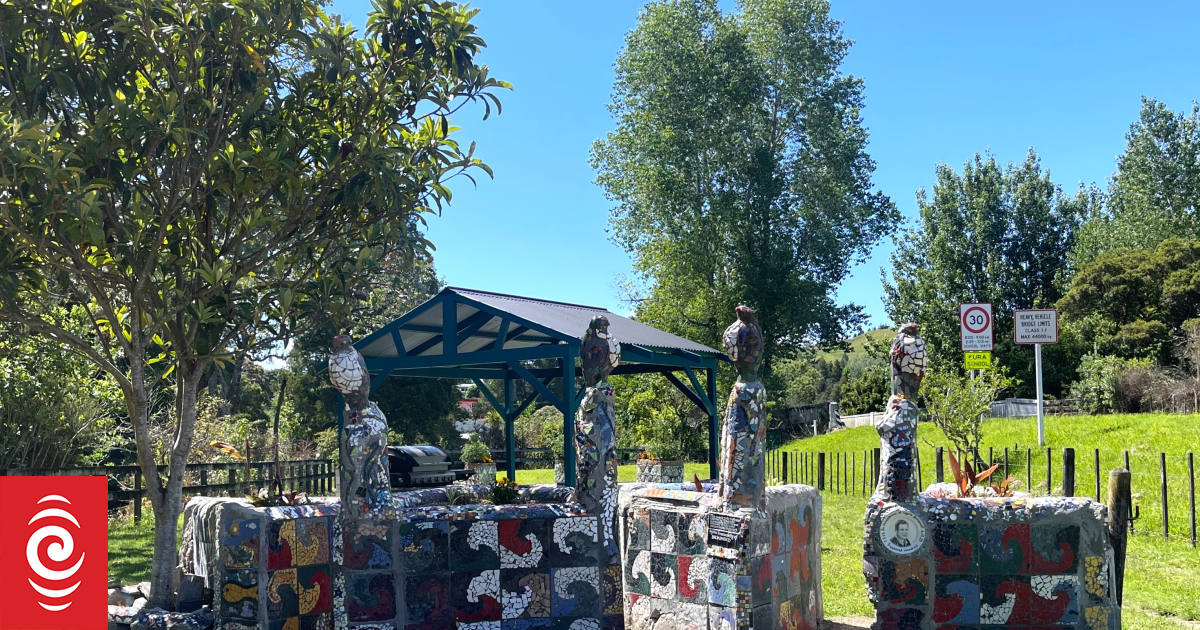Iris Symonds, Whangārei Orchid Society president. Photo / Tania Whyte
For those who want to see how horticultural chess is played, the Whangārei Orchid Society show is tomorrow and Saturday.
It is a floral display of strategy and subtlety the way it is described by society president Iris Symonds, 85.
The long-running show is on Friday and Saturday at Forum North and features orchids grown in Whangārei and across the North. The timing is earlier than its usual date because, says Symonds, it wasn’t possible to get a later date at Forum North.
And so, those exhibiting will have spent the weeks leading into it carefully eyeing the sky for a chance at sun, shielding their showpieces from rain and doing what they can to compensate for the colder winter temperatures.
That’s the timing aspect – encouraging flowers to bloom for showtime, not too early, not too late.
And it’s even more complicated with the extraordinary variety on offer, each flourishing in different conditions.
Sure, says Symonds, people can “grow” an orchid – but producing an orchid that is truly spectacular takes depth of knowledge, intuition and instinct.
“It is quite time consuming to grow them successfully. When I first started someone said, ‘you’ve got to listen to your plants’. That’s not quite what he should have said – you’ve got to observe,” Symonds said.
The society was formed in 1975 but it was a dozen or so years later when Symonds bought her first orchid at Hammer Hardware in Kawakawa.
She describes it as a “big blousey” Cattleya, which harks from Brazil and is the “typical” orchid most would associate with the flower through its striking colours, broad petals and a deep lip – the bowl where insects seek out pollen.
The word Symonds uses to describe this flower and others is “exotic”. “A rose is a rose,” she says, but orchids grow throughout the world, with the number of species exceeded only by grasses.
“They are exotic and they’re a challenge,” she said. Not only is there variation across species, there’s a subtlety between flowers of the same species that only an alert gardener will catch.
And beyond the plant are the pests. “The insects would be our biggest challenge,” she said, crushing aphids off one leaf, warning of slugs and snails and soft-bodied, wingless mealybugs.
Symonds’ embrace of orchids is now well beyond the Cattleya. Her porch and garden is a wonderland of plant life with bromeliads and orchids enriching almost every corner. She’s able to point to an orchid from Australia, then to one from China that benefits from cooler temperatures – and another “nodding” orchid that can be found in the wilds in New Zealand.
They grow in pots and in trees. The society’s information-packed press release describes the Dracula orchid, which blooms out the bottom of the pot with flowers resembling a monkey’s face. It also describes the rhizanthella gardneri of Western Australia which is rooted and flowers underground.
As a group, the society’s numbers have thinned in recent years. “Dramatically,” was Symonds’ measure of the drop. The loss of older members hasn’t been met by a balancing of younger newcomers.
Symonds believes time, rather than cost, has had an impact. “Women working just don’t have the time.”
Covid – as disruptive as it has been – could signal fresh growth with a proliferation of indoor plants, she says, and hopes.
She describes the community as one that shares knowledge rather than competes, which means the two-day show is an expression of collective and individual effort.
The doors open tomorrow at 9am. Along with those exhibiting their plants will be growers selling orchids.




